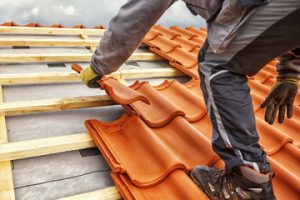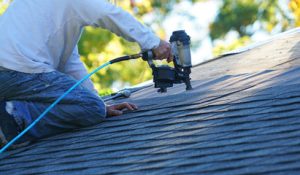Roof Replacement ensures safety and durability for any structure. A failing roof can compromise the entire building. Leaks, mold, and structural damage often begin at the top. Timely replacement prevents costly consequences.

The process of roof replacement begins with careful inspection. Professionals evaluate shingles, underlayment, and flashing. Weak areas are identified and prioritized. Planning ensures no step is overlooked.
Modern roofing focuses on energy efficiency. Reflective surfaces reduce heat absorption. Insulated layers improve climate control. Lower utility costs follow proper installation.
Weather conditions influence replacement timing. Dry seasons reduce installation risks. Excessive rain or snow can delay work. Proper scheduling ensures quality results.
New roof designs incorporate ventilation systems. Balanced airflow reduces attic heat buildup. Moisture is also managed effectively. This prevents long-term material damage.
Structural assessment is vital before replacement. Rafters and trusses must handle weight properly. Reinforcement may be required for heavy materials. Stability guarantees safety and longevity.
Modern tools enhance roofing accuracy. Laser guides, drones, and digital planning reduce errors. Precision improves efficiency and quality. Technology is transforming the roofing industry.
Roofing materials continue to evolve with innovation. Options now include eco-friendly composites and advanced coatings. Longevity and sustainability are emphasized. Aesthetic appeal complements durability.
Old roof removal requires careful handling. Debris must be cleared safely and efficiently. Recycling options minimize environmental impact. Proper disposal is a critical step.
Underlayment plays a hidden but crucial role. It provides waterproofing beneath visible layers. Quality underlayment enhances resistance to leaks. Modern products are more durable than before.
Flashing installation protects vulnerable edges. Chimneys, valleys, and skylights need secure seals. Proper flashing prevents water penetration. This detail improves overall roof performance.
Insulation integration with roof replacement adds value. Heat retention in winter and cooling in summer improves. Comfort increases with reduced energy demand. Efficient roofs serve dual purposes.
Noise reduction is another benefit of certain materials. Thicker or layered roofing reduces outside sound. Homes feel quieter and more peaceful. Roofing choices extend beyond appearance.
Storm-resistant designs are now common. Roofs withstand stronger winds and heavy rainfall. Enhanced durability prevents frequent repairs. Safety is prioritized in modern replacements.
Roof color selection affects building efficiency. Lighter shades reflect heat effectively. Darker shades retain warmth in cold climates. Choosing correctly reduces long-term costs.
Waterproof membranes provide an added shield. They prevent seepage beneath shingles or tiles. Protection extends roof lifespan significantly. Technology in membranes continues to advance.
Safety during replacement is critical. Harnesses, scaffolding, and helmets are standard practice. Proper planning prevents accidents. Worker protection is as important as quality.
Skylight integration often accompanies roof replacement. Modern skylights enhance natural lighting indoors. Proper sealing avoids leaks. Aesthetic and functional benefits are combined.
Gutter systems are upgraded during roof replacement. Proper slope ensures smooth water flow. Clogs and backups are minimized. Drainage improves overall structure protection.
Solar compatibility influences many roof designs today. Roofs must support panel weight and placement. Proper alignment maximizes efficiency. Replacement planning incorporates future installations.
Fire-resistant materials are increasingly in demand. They provide added safety for vulnerable areas. Special coatings slow fire spread. Security extends beyond weather protection.
Moisture barriers are essential for humid climates. They prevent condensation from damaging wood structures. Balance of ventilation and sealing is critical. Health risks from mold are avoided.
Roof replacement can increase property value. A new roof enhances curb appeal instantly. Buyers prefer homes with updated protection. Investment returns are substantial.
Environmental impact is reduced with recycled materials. Many modern roofs use sustainable sources. Waste is minimized through advanced practices. Eco-conscious choices shape roofing trends.
Roof replacement also considers noise during work. Scheduling and communication reduce homeowner disruption. Efficient crews shorten project duration. Respect for occupants improves overall experience.
Temperature management in attics is part of planning. Ventilation reduces heat buildup. Proper insulation prevents energy loss. Balance keeps indoor climate consistent.
Drone inspections are now part of assessments. They provide detailed aerial views of roof conditions. Risk to inspectors is reduced. Technology increases accuracy and safety.
Warranty options add confidence to roof replacement. Manufacturers and installers offer extended coverage. Protection ensures peace of mind. Long-term reliability is guaranteed.
Roof replacement requires precise budgeting. Materials, labor, and disposal costs must be planned. Unexpected repairs may arise during work. Financial readiness ensures smooth progress.
Acoustic insulation can be paired with roofing. It reduces impact from rain or hail. Indoor spaces remain calm. Noise management adds comfort benefits.
Slope design affects roof performance. Steeper slopes improve water drainage. Flat designs require special waterproofing. Each choice suits different architectural needs.
Seasonal performance testing ensures durability. Roofs are evaluated against heat, cold, and storms. Adjustments are made during installation. End results match long-term expectations.
Professional training is essential in modern roofing. Workers learn advanced techniques and safety protocols. Quality depends on skilled labor. Certification standards guarantee excellence.
Roof replacement often includes structural upgrades. Reinforcing beams or supports extends building life. Integration with modern systems improves stability. The structure adapts to future needs.
Thermal imaging is used during inspection. It reveals hidden leaks or insulation gaps. Problems are identified quickly. Technology prevents future damage.
Re-roofing decisions consider local climate. Material choice is based on temperature, humidity, and storms. Performance varies with environment. Tailored solutions achieve best results.
Roof replacement requires collaboration. Homeowners, contractors, and designers align goals. Communication avoids mistakes. The process is smoother with teamwork.
Proper drainage extends roof longevity. Valleys, slopes, and gutters are aligned carefully. Water is guided away efficiently. Damage from pooling is prevented.
Roof coatings provide additional protection. Reflective or waterproof layers enhance durability. Maintenance needs are reduced. Coatings extend roof life significantly.
Attic ventilation supports roof efficiency. Ridge vents and soffit vents balance airflow. Moisture buildup is avoided. Temperature consistency is improved.
Emergency roof replacement follows severe damage. Storms or fallen trees demand fast action. Temporary tarps prevent further harm. Quick response reduces repair costs.
Roof replacement influences sustainability goals. Energy-efficient materials reduce carbon footprint. Recycled options conserve natural resources. Modern choices align with global concerns.
Homeowners often balance cost with durability. Affordable options may require more maintenance. Premium materials last longer with fewer issues. Smart choices consider long-term savings.
The evolution of roof replacement continues. Innovations in design, materials, and safety redefine standards. Efficiency, beauty, and strength combine in each project. Modern roofing ensures protection for generations.
